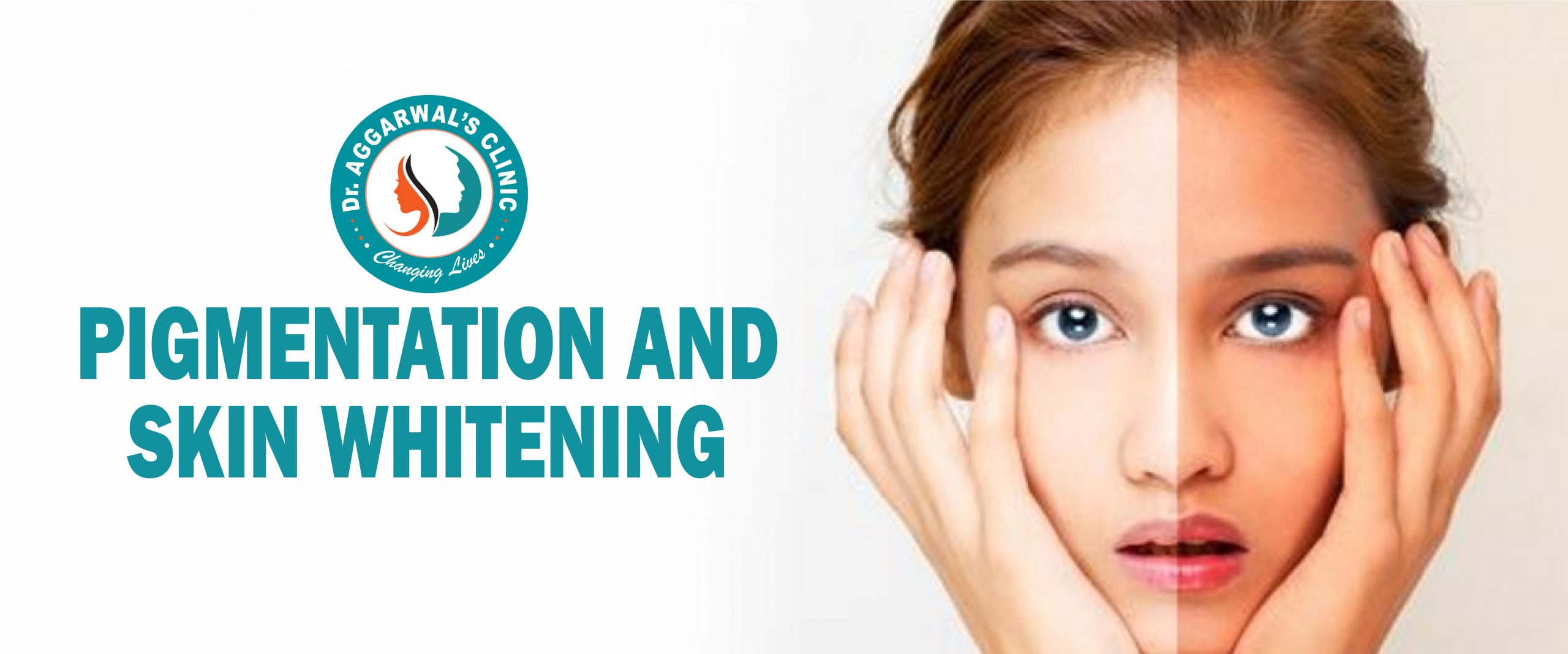Pigmentation And Skin Whitening

Meet Our Team of Experts.
Dr. Karun Aggarwal is amongst one of the best Hair doctor in Jodhpur and this is claimed not only by us but also by many of his former and current patients. He is cited as one of the best for Hair Transplant in Jodhpur and can provide many types of Hair Loss Treatment in Jodhpur itself. He has completed his post graduation in facial plastic and maxillofacial surgery in 2011. He did his fellowship in Aesthetic Medicine and Laser from Germany and is a very trusted Facial Plastic Surgeon and Hair doctor in Jodhpur. Dr. Aggarwal is also a very experienced doctor for all types of hair problems and is a certified trichology expert who has performed many hair transplant surgeries successfully. He is one of the few doctors whose experience is coupled with genuine concern for his patients.
Meet Our Team of Experts.
Dr. Karun Aggarwal is amongst one of the best Hair doctor in Jodhpur and this is claimed not only by us but also by many of his former and current patients. He is cited as one of the best for Hair Transplant in Jodhpur and can provide many types of Hair Loss Treatment in Jodhpur itself. He has completed his post graduation in facial plastic and maxillofacial surgery in 2011. He did his fellowship in Aesthetic Medicine and Laser from Germany and is a very trusted Facial Plastic Surgeon and Hair doctor in Jodhpur. Dr. Aggarwal is also a very experienced doctor for all types of hair problems and is a certified trichology expert who has performed many hair transplant surgeries successfully. He is one of the few doctors whose experience is coupled with genuine concern for his patients.
Pigmentation And Skin Whitening
Hyper-pigmentation of the skin resulting in skin discoloration occurs due to the excessive production of melanin. It may affect any area of the body and could be a source of great distress to the patients but most people get impacted with pigmentation on face. In some cases skin pigmentation could be a manifestation of an underlying medical condition and therefore each case of hyper-pigmentation should be evaluated thoroughly.
Causes of Pigmentation







Types of hyperpigmentation
Sunspots
Sunspots, which are also known as solar lentigines, are often caused due to extensive exposure to the sun. These also appear on those parts of the body, which are constantly exposed to the sun, such as the face and hands.
Melasma
Melasma is often considered to be caused due to a change in the hormonal activity in the body. This is why it is most commonly seen in women, during their pregnancy. While the condition could show up in any part of the body, it is seen most commonly on the face and abdomen.
Post-inflammatory
There is also something known as post-inflammatory hyperpigmentation, which is caused due to an injury to the skin
Causes and Methods of Diagnosis
Causes
There are a few basic causes for hyperpigmentation:
- Excess production of melanin, the pigment that gives skin the colour can cause hyperpigmentation- remove from here
- Excessive exposure to the sun can cause an increase in melanin production
- Certain medications, especially certain chemotherapy drugs can lead to hyperpigmentation
- When there is a change in the hormonal levels due to pregnancy or any other condition, there can be an increase in the melanin production
- Underlying medical conditions such as Addison’s disease tends to affect the adrenal glands, which in turn will affect the hormonal and melanin production
Methods of diagnosis
The main methods of diagnosis include:
- Wood’s Lamp: This is a device that emits UV light and is one of the most preferred methods of diagnosing hyperpigmentation. The procedure is performed in a dark room. This helps in the determination of the type and extent of the pigmentation.
- Magnifying lamp: When the skin is looked at, under the magnifying lamp, the extent of the hyperpigmentation will be easy to determine. In addition, the same tool will also allow for the diagnosis of other associated skin conditions too
- Skin biopsy: In situations, where the lamps are not proving to be effective enough to gauge the extent of the pigmentation, the dermatologist might have to resort to a skin biopsy. This method might be especially useful for diagnosing the associated skin disorder
Advantage of Pigmentation Treatment
After a few sessions, you will start to notice that the pigments have started to fade away and the natural colouring of your skin is starting to return. In addition, the treatment can reduce the spread of the pigmentation. The treatment will also include treating the root cause of the condition, which will deter further appearance of the pigment.
Before, during & after the Pigmentation treatment
Before treatment (laser, chemical or peel based) can be started, a detailed skin analysis will be required, because only after gauging the severity of the condition, can a course of treatment be charted out. This is why, it is important that an experienced doctor do the examination. It is also important to collect information regarding the lifestyle, medical history, consumption of certain medication and even genetics.Some of the important points of investigation will include:
- UV exposure – Studies have shown that over exposure to sunlight can lead to pigmentation. Excessive usage of tanning beds can also lead to the condition as can, not using enough sunscreen.
- Current and past medical conditions – There are several medical conditions that can contribute to the hyperpigmentation, including thyroid imbalance, Cushing’s disease, Addison’s disease, pregnancy, use of birth control pills or even hormone replacement. The doctor will also need to know about the medications that you might have taken in the past few months, because certain medications can also cause the condition.
- Dermatological or surgical treatments – If you have had any surgeries or dermatological procedures in the past, it would be wise to tell your doctor about the same.
During laser treatment for pigmentation
Once you have been brought into the laser treatment room, here are the steps that will be followed:
- A laser will be used and the intense light from it will be passed through the epidermis. The light will be absorbed into the skin pigments.
- The energy that is emitted will break up the pigment cells and the particles hence created will be removed by the immune system of the body.
- Almost immediately after the pulse of laser light has been applied, the skin will start to look grey. There could also be a little bleeding. This is part of removing pigmentation treatment.
- A sign of the top layer of skin turning would be the blistering and crusting.
- The time taken for the crust to fall off will depend on how deep the pigments are and also where on the body they are.
- The pigments might not fade after the first session and a few more might be required.
After laser treatment for pigmentation
Chances are that you will not be done in one session and you will be asked to come back a fair few times. However, immediately after the first session, your skin will feel tender and there could be some superficial bleeding.
You will be given instructions on how to care for your skin and you might also be given certain medicines to help with the same. You might be asked not to step out into the sun for a few days or protect the treated area, if you do need to step out.
Skin Whitening
Skin Whitening is a process of reducing the melanin pigment in the skin hence giving it a brighter complexion. Dark skin has more amount of melanin in the skin and so it is reduced so as to make the skin brighter. Laser Treatment in Jodhpur is Possible.
The Procedure
Skin Whitening Treatment in Jodhpur at Dr.Aggarwal’s Clinic
At Dr.Aggarwal, Skin whitening can be dangerous, painful and expensive. The goal of skin whitening (or skin bleaching) is to lighten or fade your complexion beyond the natural skin tone.
What is Skin Whitening?
Skin-whitening is the process by which people reduce the melanin pigment in the skin to give a whiter complexion. Those with dark complexion have more melanin and the quantity of melanin determines the color of a person’s skin. Melanin is manufactured by cells called melanocytes. The melanin quantity of a person’s skin depends upon the genetic buildup. The production of melanin is affected by exposure to the sun, the degree of damaged skin, and exposure to chemicals.
How is the skin whitening procedure done?
he first step towards a skin whitening procedure would be to schedule an appointment with a dermatologist and tell him/her what kind of skin tone you have in mind. To get a clearer idea across it would be best if you carried a picture with you of the person with the desired skin tone that you have in mind. After discussing with your dermatologist, you may go and talk to the plastic surgeon. You can also show him/her the picture so that he/she knows what it is you exactly want.After consulting with both the dermatologist and plastic surgeon you decide on the option that you want based on your health, requirements and financial position- you can go for a skin bleaching treatment or something as expensive as surgery. Aside from being extremely expensive skin whitening procedures are also very painful and you need to be prepared for both.



